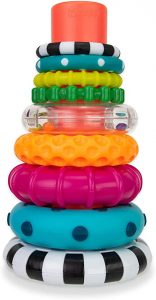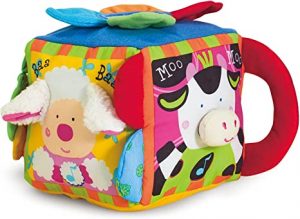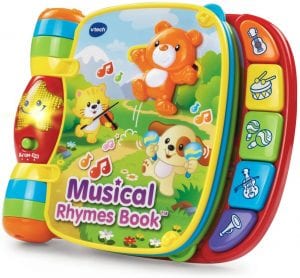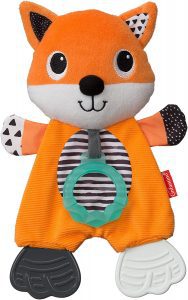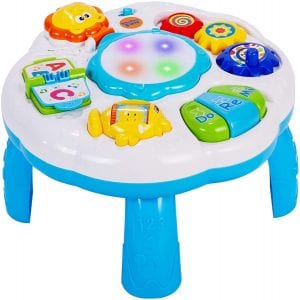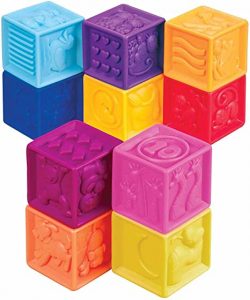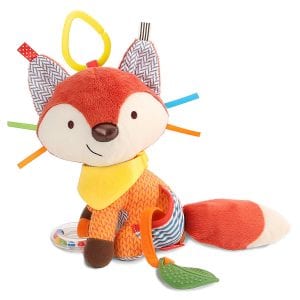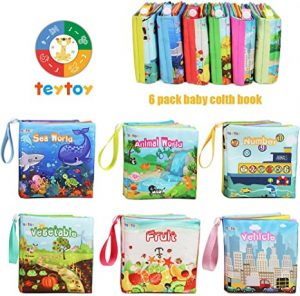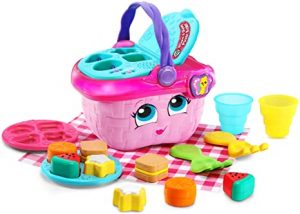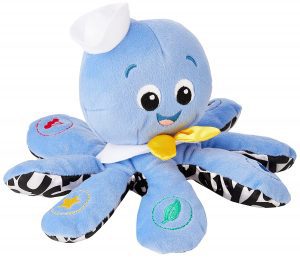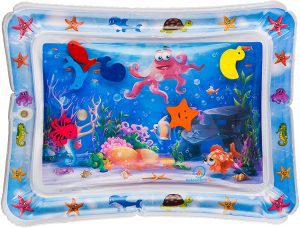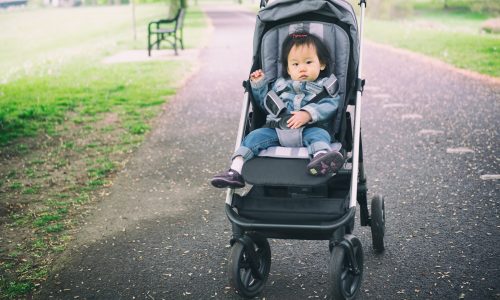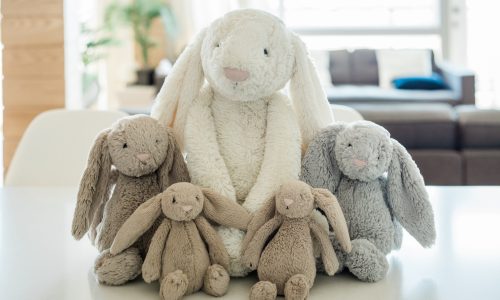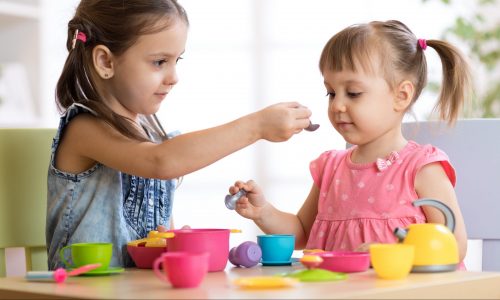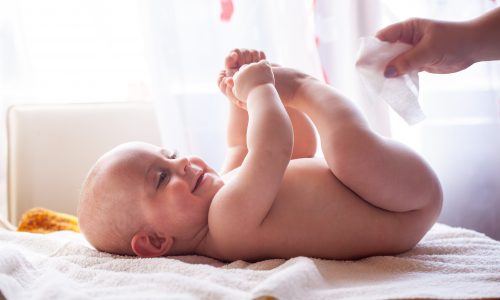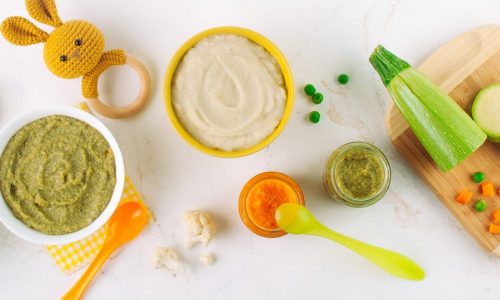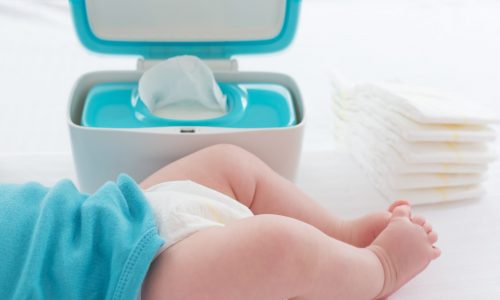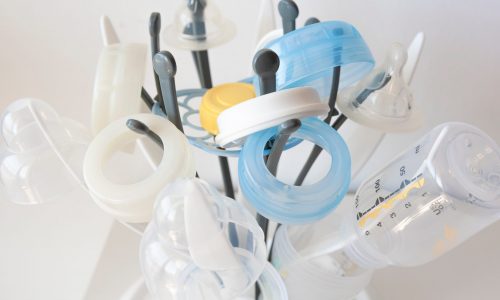Best Baby Toys for 6-12 Months
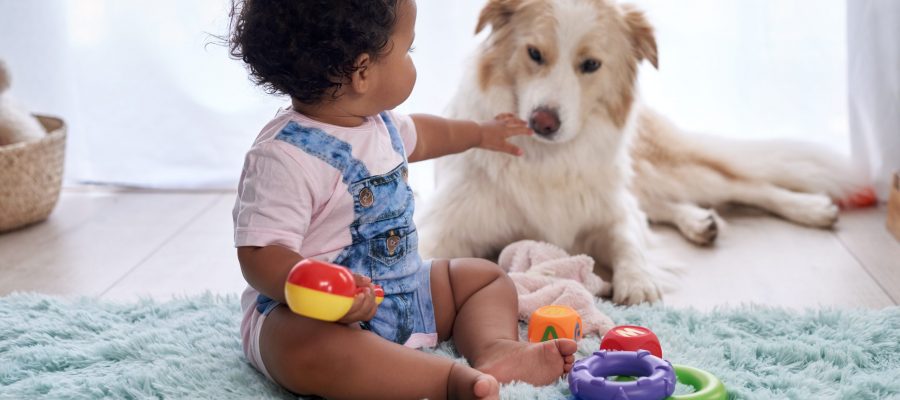
Our Review Process
Don't Waste Your Money is focused on helping you make the best purchasing decision. Our team of experts spends hundreds of hours analyzing, testing, and researching products so you don't have to. Learn more.
Our Picks For The Top Baby Toys
- 1. Sassy Textured Stacking Toy
- 2. Melissa & Doug Farm Melodies Toy
- 3. VTech Nursery Rhymes Book Toy For 6-Month-Old Girls
- 4. Dahuniu Educational Activity Table
- 5. Infantino Fabric Fox Sensory Teether Toy
- 6. B. Toys BPA-Free Blocks
- 7. Skip Hop Ferguson Fox Bandana Buddies Activity Toy
- 8. teytoy Washable Soft Baby Books
- 9. LeapFrog Musical Picnic Basket Toy
- 10. Baby Einstein Musical Stuffed Animal Octopus
- 11. Splashin’kids Tummy Time PVC Water Mat Infant Boy Toy
Increase your baby's hand-eye coordination with this fun toy for 6-month-old children. Each of the rings are designed to be stacked from largest to smallest. The rings are not only colorful and attractive to little ones, but also made using different textures and weights.
Great for Gift GivingThe budget-friendly price tag on this baby toy makes it perfect for gift giving.
There's so much your little one can do with this toy. The block is nice and soft to the touch and features a built-in plush handle for easy carrying. In addition to the attached teethers, this toy also has a mirror and several pieces that crinkle when your baby squeezes them.
Entertains for HoursIf you press the animal noses on this toy for 6-month-old girls, you'll be able to hear four different sounds.
Babies will love flipping the pages and pressing the interactive buttons book. It plays classic nursery rhymes and cheerful music. The book also introduces age-appropriate vocabulary for babies and toddlers.
Easy-to-Turn PagesThis fun interactive book is easy for babies to use on their own.
With soft fabric and bright, eye-catching prints, this teether toy can help soothe an infant. The feet are made from chewable material in addition to the teething ring, all of which are BPA free. Interior material makes crinkle sounds for further engagement.
Simple DesignThis teether for infants combines a toy with a stuffed animal to keep little minds occupied.
Buying Guide
The first year of a baby’s life is an important one. During this time, an infant starts developing fine motor skills and begins to learn to communicate, among other things. But infants also want to be entertained. Luckily, toy manufacturers work hard to develop toys that will not only engage young minds but also help with that development.
But a baby’s needs can vary from one month to another during infancy. Many toys are designed for children who are much older, so it’s important to rule those out. You’ll also find some toys that are labeled for children 6 months and up need parental supervision for infants under a year old. You know better than toy manufacturers what’s best for your own infant, so it’s important to trust your own judgment over what’s printed on the packaging.
When shopping for toys for your infant boys, here are some general guidelines to help you with those age differences:
- 0 to 3 months—At this age, babies are still learning to move their arms and legs. If you hand your infant a toy at this age, chances are your baby will be able to grab it but not hold it for long periods of time.
- 4 to 6 months—A baby’s grasping ability tends to become a little more advanced in this stage. Simple, colorful toys are popular at this age, particularly those that make noises.
- 7 to 9 months—Infants can not only grasp longer at this age, but they can also often transfer objects from one hand to another. This is a great age for babies to begin learning cause and effect. Toys that give a response when a button is pushed or a dial is turned can be big hits.
- 10 to 12 months—Infants at this age play more independently. Toys that let them safely bang items or move items from one place to another can help them get more comfortable with their developing motor skills.
What to Look For
- If a toy is rated for an older age than your child is, consider whether you’re willing to supervise him as he grows into it. Some toys simply have small parts or feature aspects that are too complex for some infants. If you’re willing to play alongside your child, an infant could start enjoying a toy built for 18 months or older.
- Some toys require batteries to operate. Those batteries are sometimes not included. Read the fine print before you buy a toy to make sure you won’t be stranded with a toy that doesn’t work.
- If you opt for a toy that has audio as part of its features, being able to adjust the volume can be a valuable bonus.
- Toys that play music can become monotonous after a while, particularly if they only play one or two songs. Look for toys that have multiple songs built in for some variety over the months your child will be playing with them.
- Parents looking for a toy that encourages musical aptitude can find them in a variety of formats. There are toys that teach the keyboard and others that are built for future drummers. In addition to an appreciation for music, these toys can also help with development.
- Infants are often drawn to bright colors. Keep this in mind when you’re choosing a toy. One with buttons or dials that are bright in color might encourage boys to take action.
- Physical activity can be important as infants are learning to crawl and walk. Look for a toy that encourages children to chase. This will keep your little one on the move as he’s becoming more mobile.
More to Explore
Babies aren’t born with their vision fully formed. It’s still developing even after a baby comes out of the womb, and it continues to develop throughout infancy. In those earliest months, infants can best see objects from 8 to 12 inches away. Babies are nearsighted in the beginning, so items that are farther away appear blurry.
But other senses are ready to go from the start. Infants start hearing sounds in the womb, and that only intensifies after birth. Touch, taste and smell are all strong in infants, and in fact, infants are typically more interested in sweet tastes than bitter ones. But a baby’s sense of taste will continue to intensify during those early months. For most infants, hearing is strong from the start, but most hospitals will do a hearing screening before a newborn is released.

